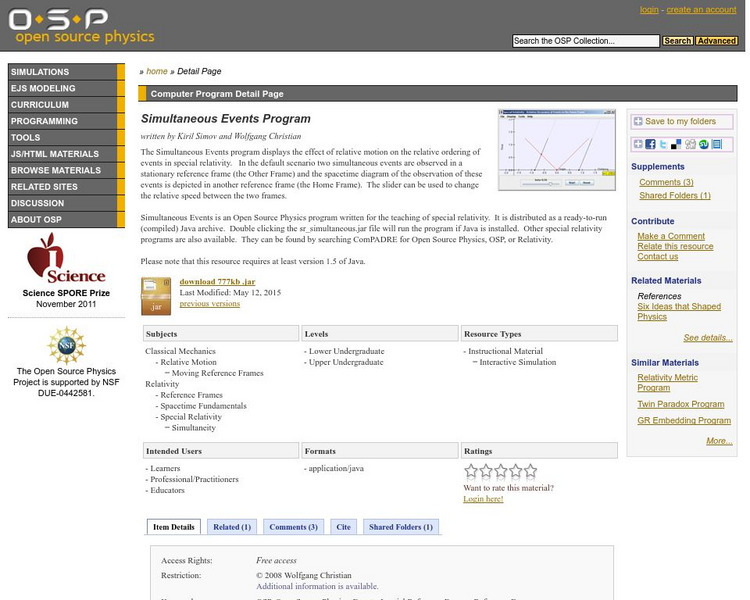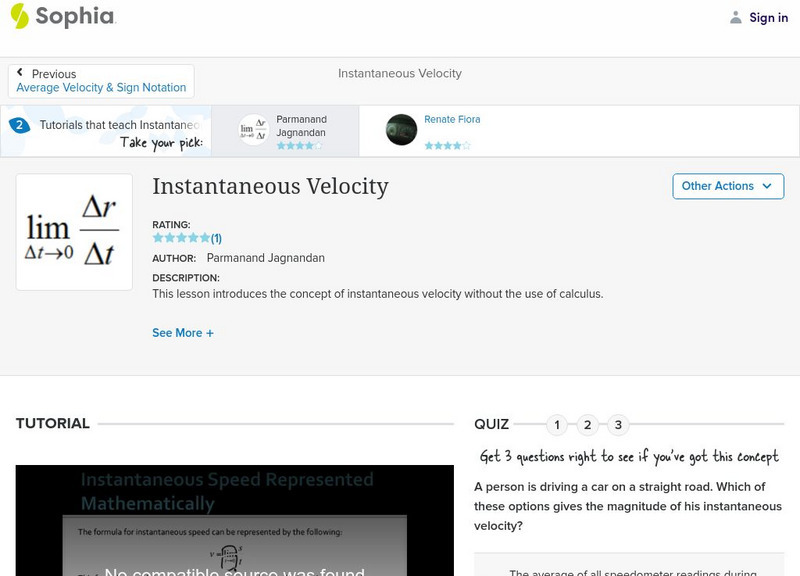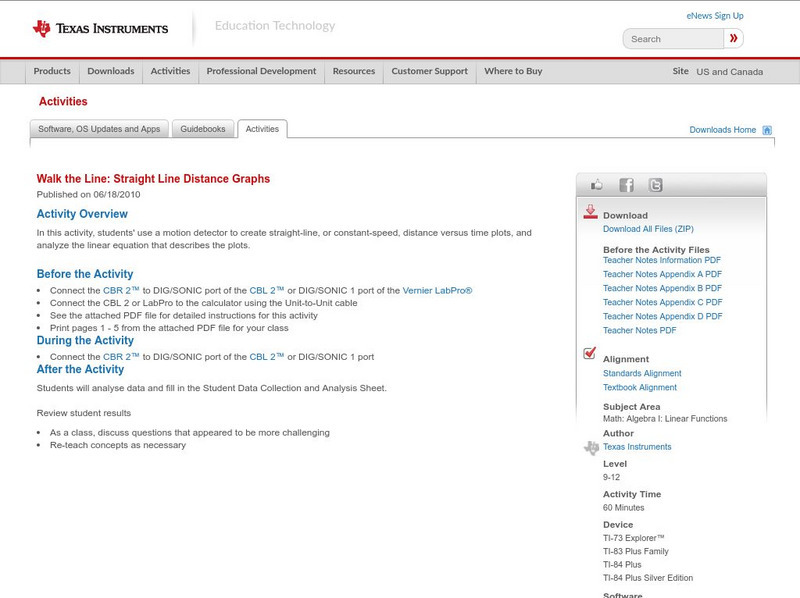Hi, what do you want to do?
Physics Aviary
Physics Aviary: Pvc Freefall
This lab was designed to give students practice collecting and analyzing data for the PVC Freefall Lab. Masses are dropped from different heights and the speed of the object as it passes through a photogate is calculated. The...
Concord Consortium
Concord Consortium: Stem Resources: Launching a Satellite
Do you think you could fire an "unpowered" object into orbit? By controlling the angle and speed at which the satellite is launch, students will try to launch a satellite into space with this computer model. Activity includes questions...
Annenberg Foundation
Annenberg Learner: Design a Roller Coaster
An interactive lesson where students design and build their own virtual roller coaster. Choose the height of the hills. the shape of the hills. and loop to find out if you successfully used physics concepts to pass the safety and fun...
Weather Wiz Kids
Weather Wiz Kids: Wind
Wind is air in motion. It is produced by the uneven heating of the earth's surface by the sun. Since the earth's surface is made of various land and water formations, it absorbs the sun's radiation unevenly. Two factors are necessary to...
Physics Aviary
Physics Aviary: Practice Problems: Drone Delivery Problem
Students must determine where a drone should be when it releases its package so that the object lands on the target.
American Association of Physics Teachers
Com Padre Digital Library: Open Source Physics: Simultaneous Events Program
Simulation showing how relative motion affects event order in special relativity. Manipulate the relative speed of two simultaneous events and observe the results.
Other
Hvpm: The Evolution of Flight
A description of the wings and compound eyes of insects and its components; also discusses the advantages and disadvantages of having compound eyes.
McREL International
Mc Rel: Whelmer #9 Learning Activity: Nickel Karate
An easy to do activity that investigates the basic theories of inertia. The activity is in lesson plan format that meets NSES standards.
Middle School Science
Middle School Science: Balloon Powered Race Cars
An idea developed by a physical science teacher who applied Newton's Laws of Motion in creating a balloon powered race car. Find simple objective, materials, rules, and procedures.
McREL International
Mc Rel: Whelmer #12 Learning Activity: Bernoulli Cans
An easy to do activity that investigates Bernoulli's principle. The activity is presented in lesson plan format that meets NSES standards.
Sophia Learning
Sophia: Instantaneous Velocity: Lesson 1
This lesson introduces the concept of instantaneous velocity without the use of calculus. It is 1 of 2 in the series titled "Instantaneous Velocity."
Other
Fear of Physics: Roller Coaster
Use animation and other interactive strategies to help understand physics principles. Change the track and height to see if your ball can make it to the end.
Stanford University
Stanford University: Conventionality of Simultaneity
This site from Stanford University is on the topic of simultaneity in relativity.
Texas Instruments
Texas Instruments: Walk the Line: Straight Line Distance Graphs
In this activity, students' use a motion detector to create straight-line, or constant-speed, distance versus time plots, and analyze the linear equation that describes the plots.
Texas Instruments
Texas Instruments: Falling Down Adventure 5
Students use the CBR 2 to study how a change in mass affects the average speed of a falling object. They graph distance as a function of time, and interpret and analyze graphs representing motion.
Science Education Resource Center at Carleton College
Serc: Investigating Diffusion of Molecules in Liquid
Scientific inquiry activity where students investigate how molecules move in liquid. They will observe that molecules in liquid move in a random manner and that heat will increase and cold will decrease the speed of molecular movement in...
Science Education Resource Center at Carleton College
Serc: Centripetal Force Activity
In this physics activity, students will simulate a race car on a circular track. Velocity, acceleration, and force vectors will be analyzed at various places along the track. As the students progress in the activity, prompts for student...
Physics Classroom
The Physics Classroom: 1 D Kinematics: Meaning of Slope for a v T Graph
In this part of a physics lesson, examine how the actual slope value of any straight line on a velocity-time graph is the acceleration of the object.
Concord Consortium
Concord Consortium: Molecular Workbench: Reversing Velocity of Charged Particles
Adjust the particle speed in this simulation and observe how the particle's motion is affected.
McREL International
Mc Rel: Whelmer #33 Learning Activity: Density Balloon
A simple activity that investigates the effect of heat on the volume of a gas. The activity is presented in lesson plan format that meets NSES standards.
Other popular searches
- Motion and Speed
- Forces and Motion Speed
- Motion Speed and Velocity
- Motion Speed and Distance
- Motion, Speed and Distance
- Motion and Speed Labs
- Speed and Motion Graphs
- Motion and Speed Lessons
- Motion and Speed Powerpoints

















